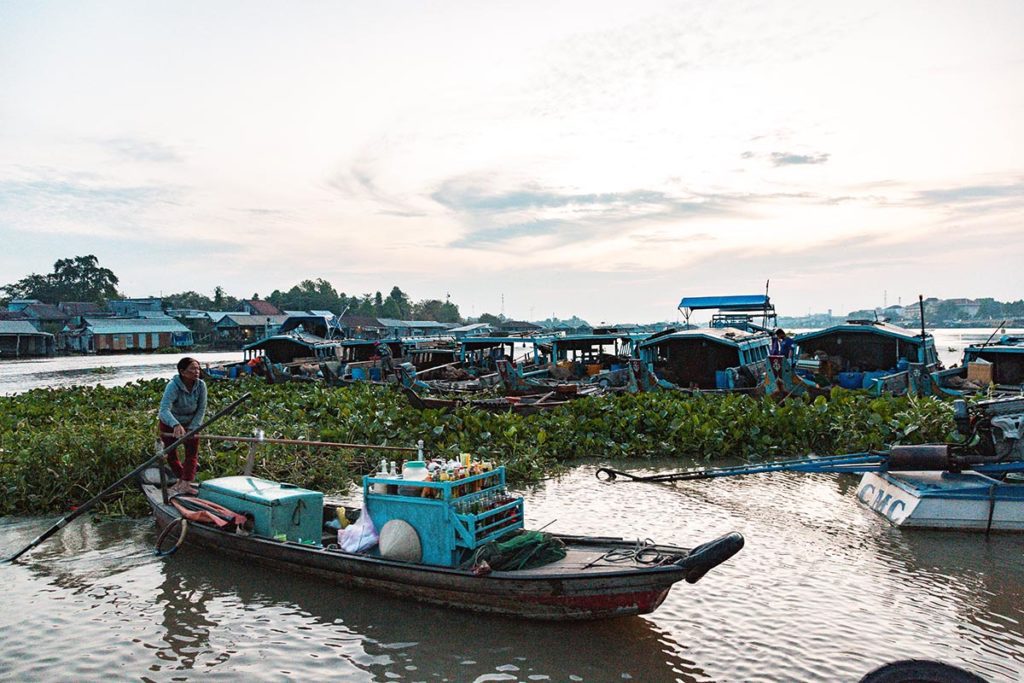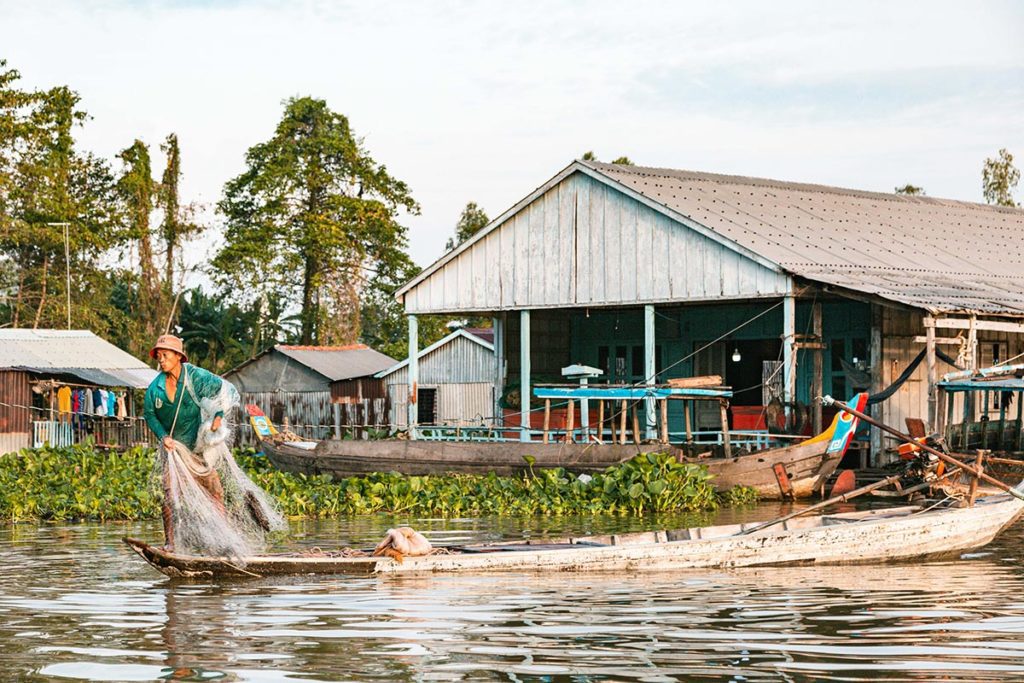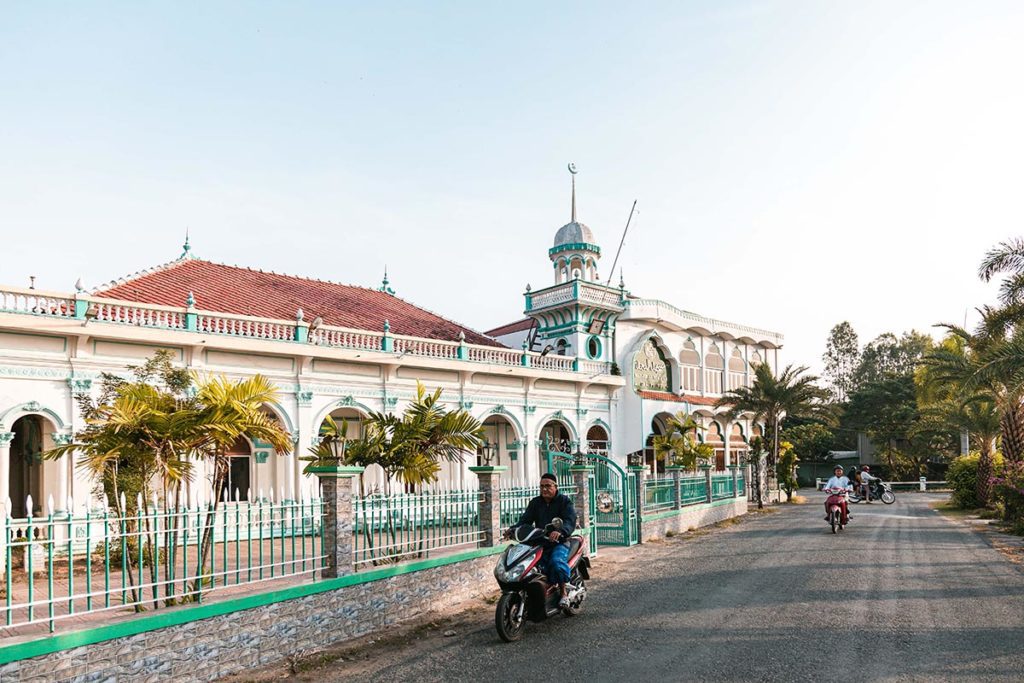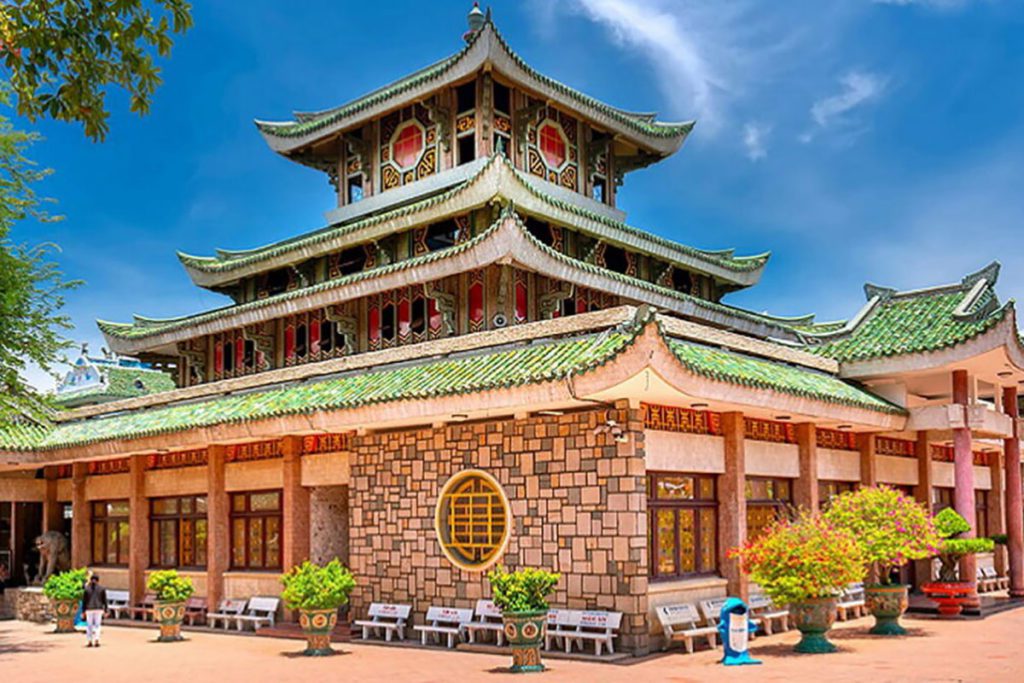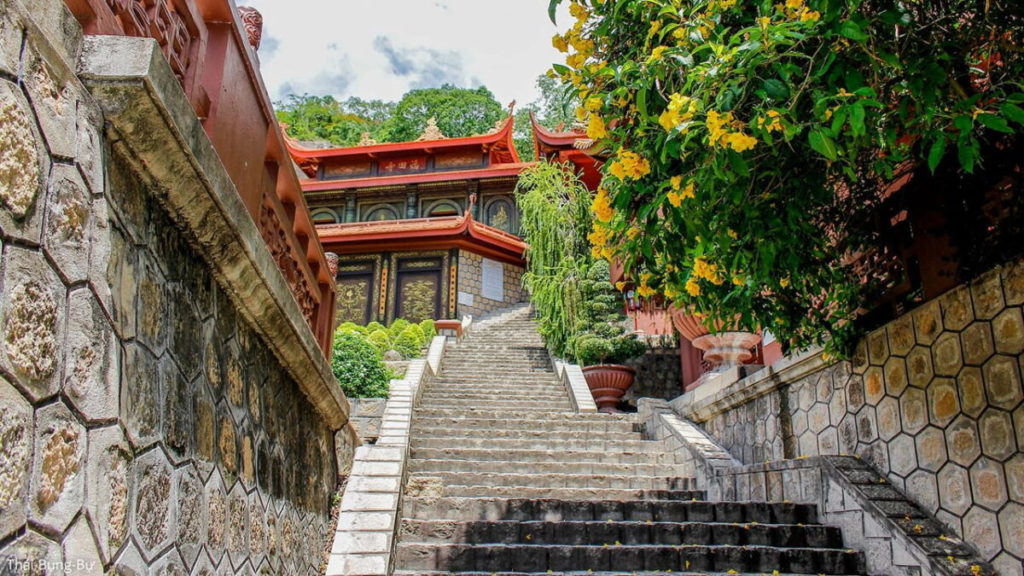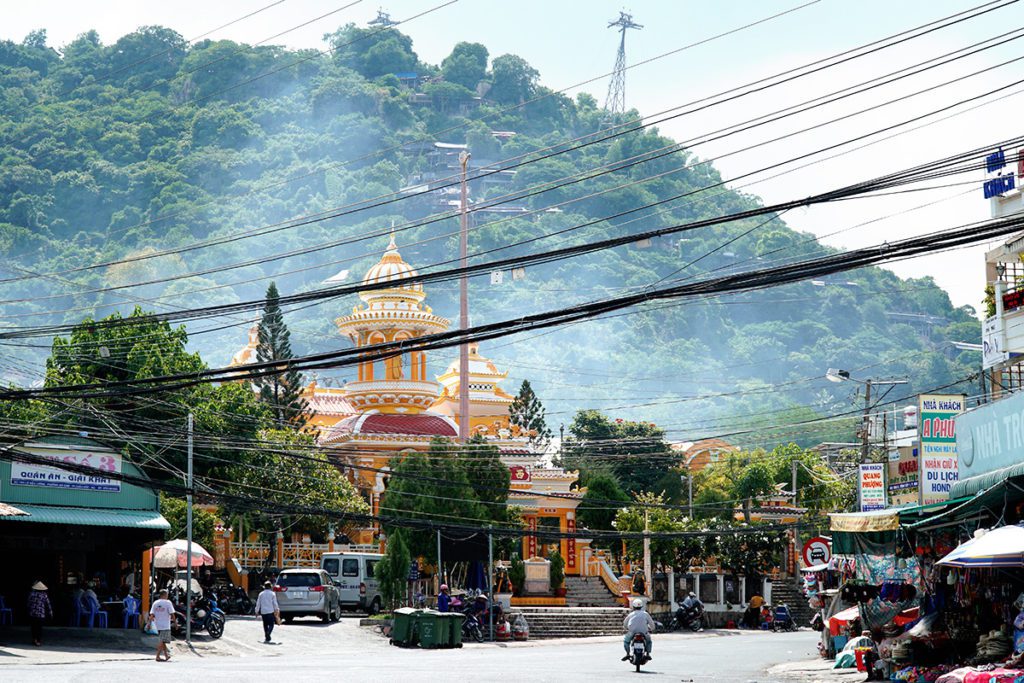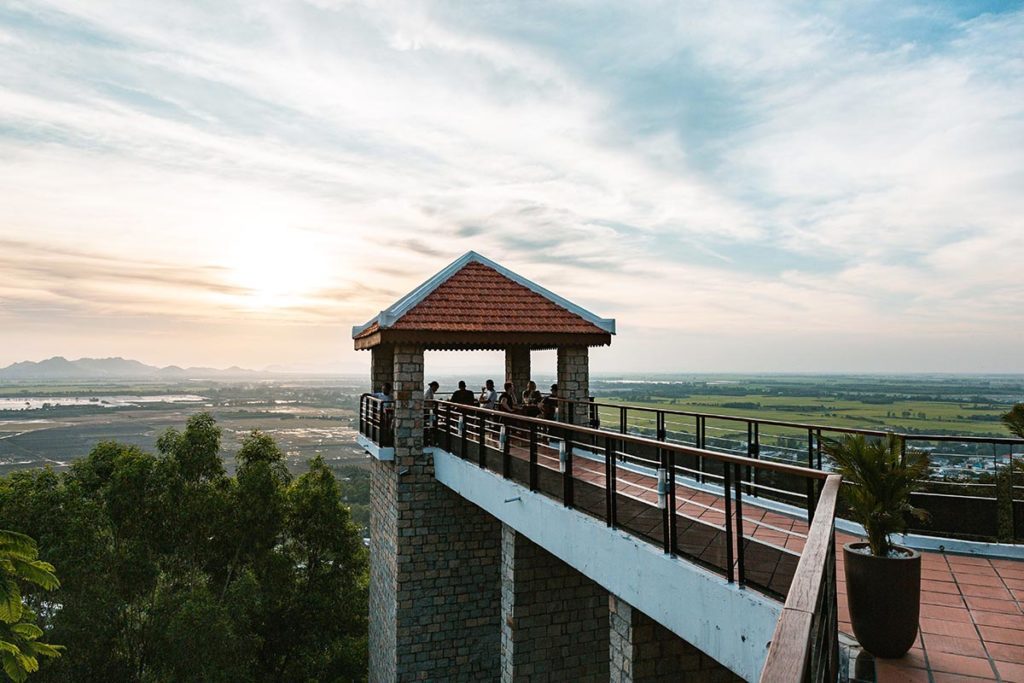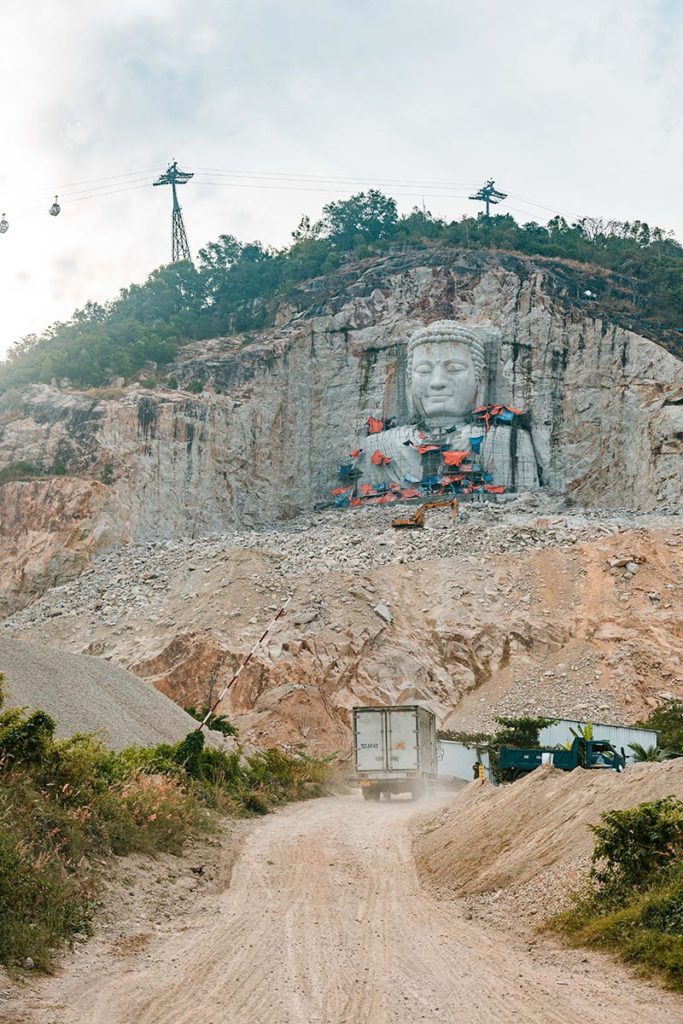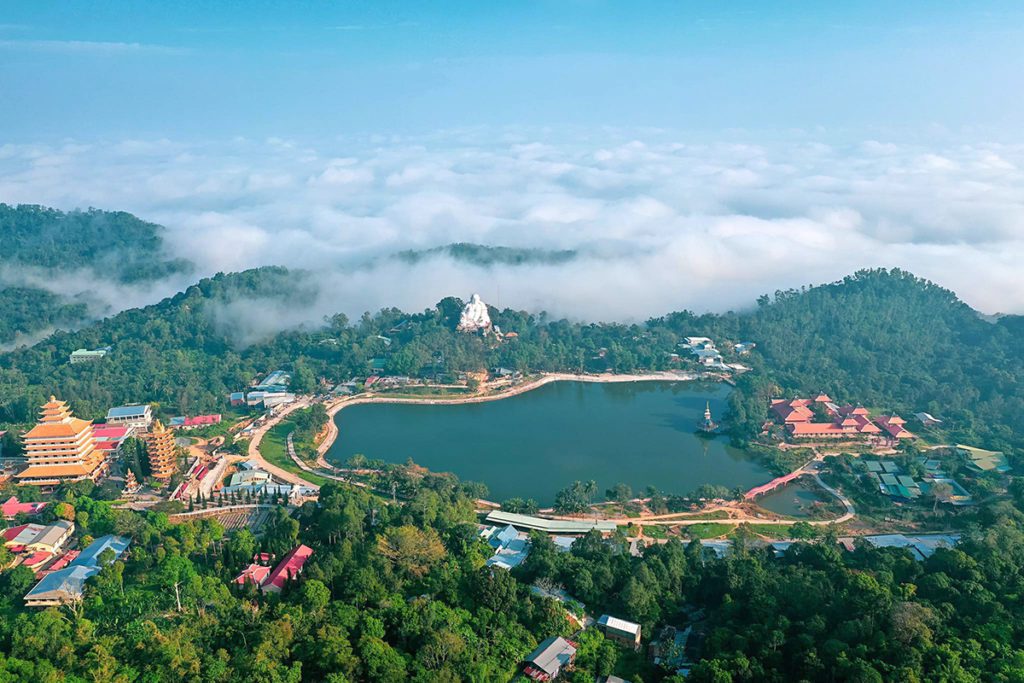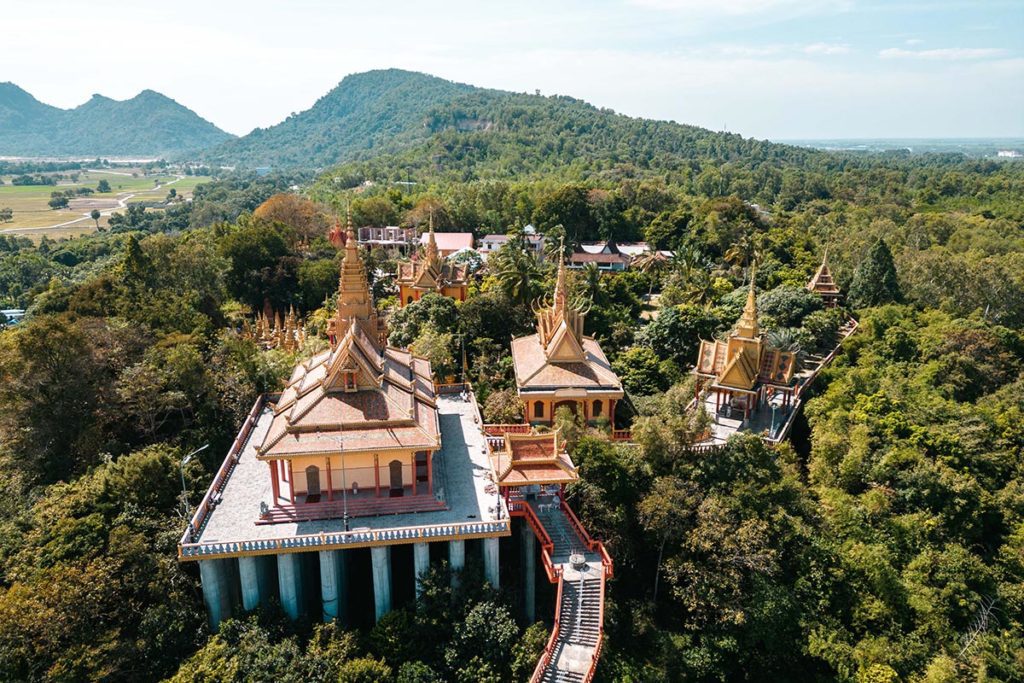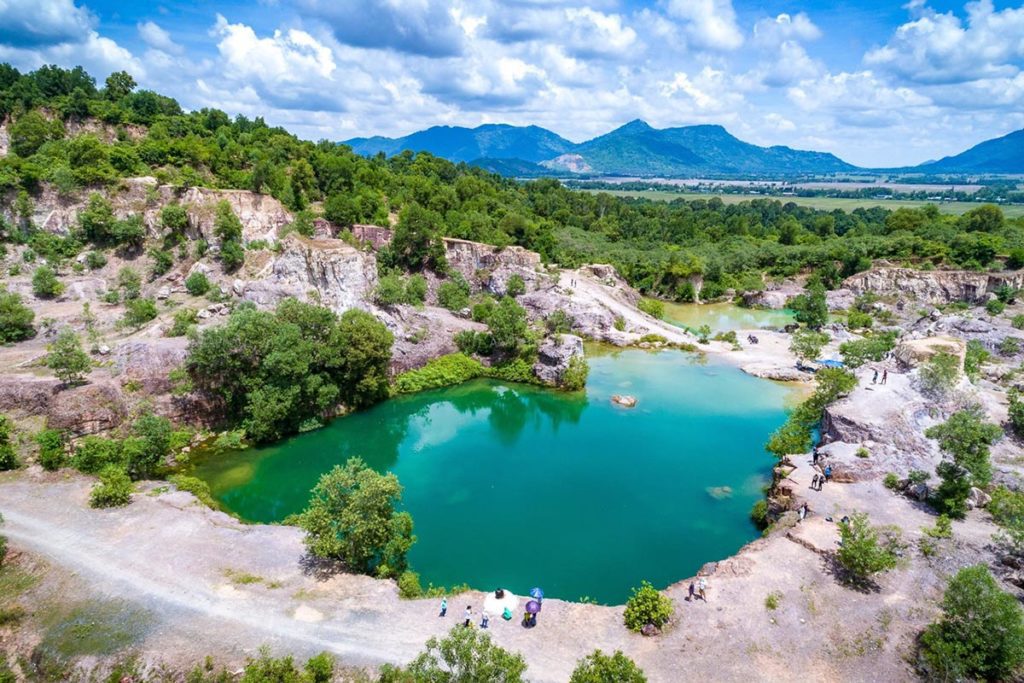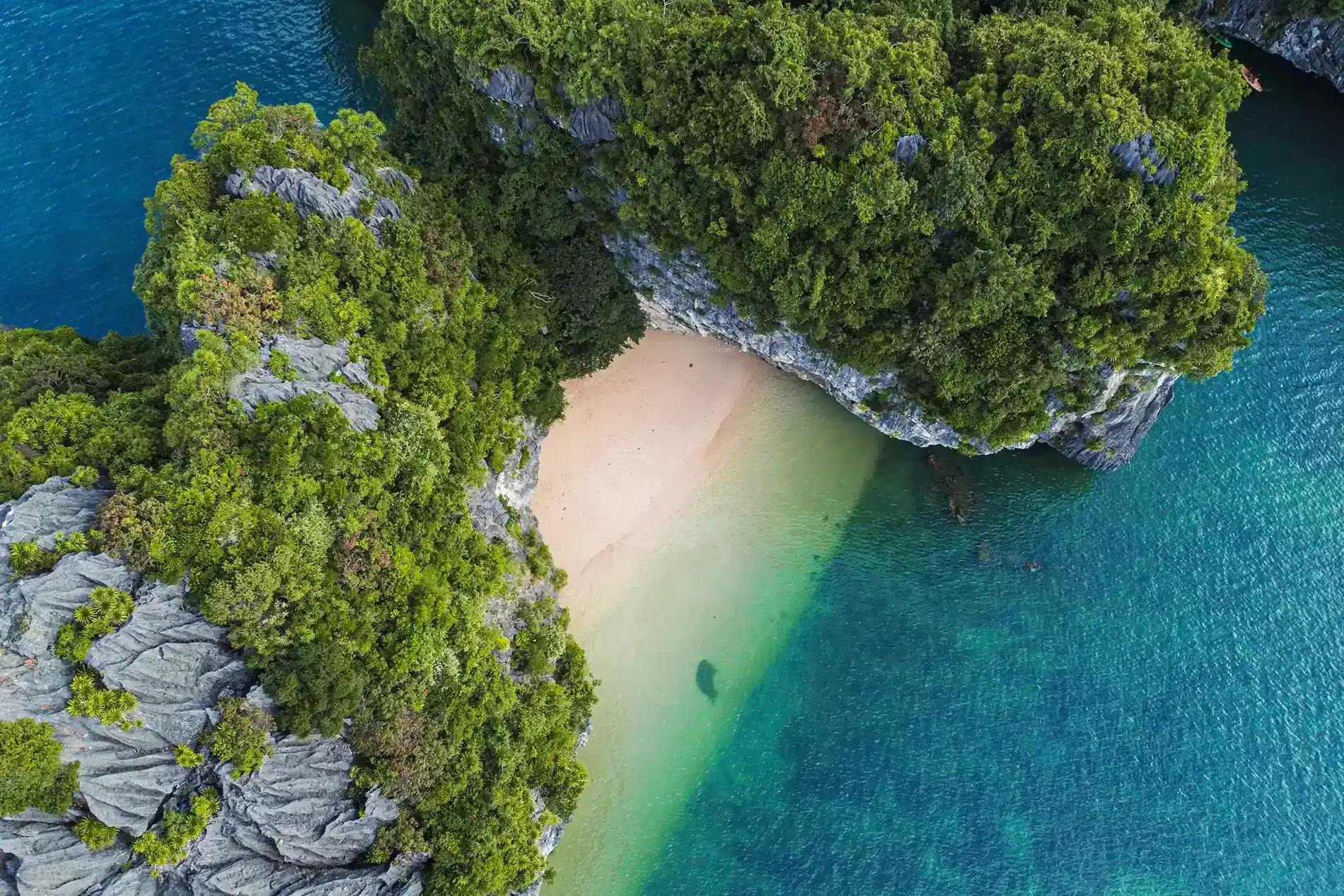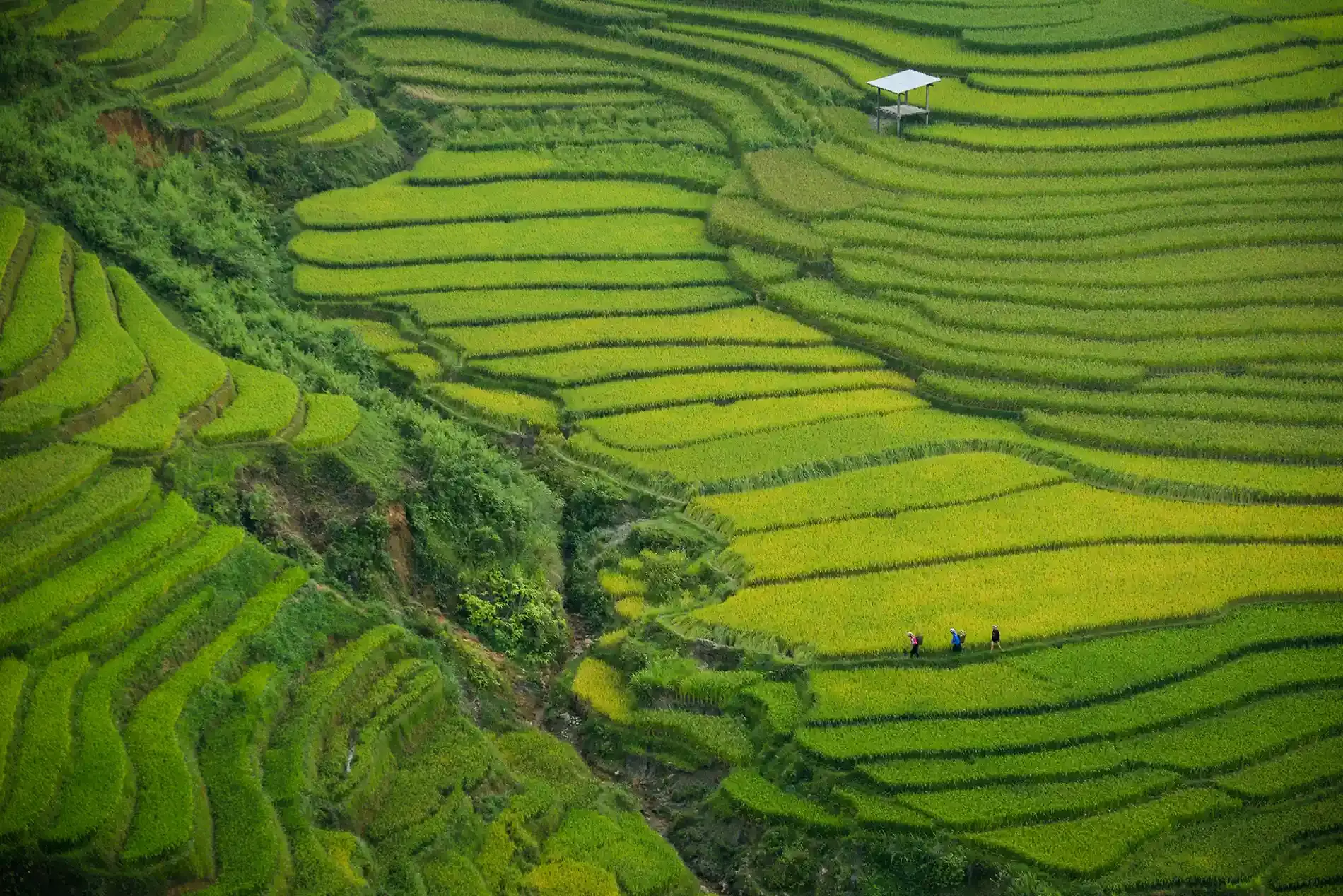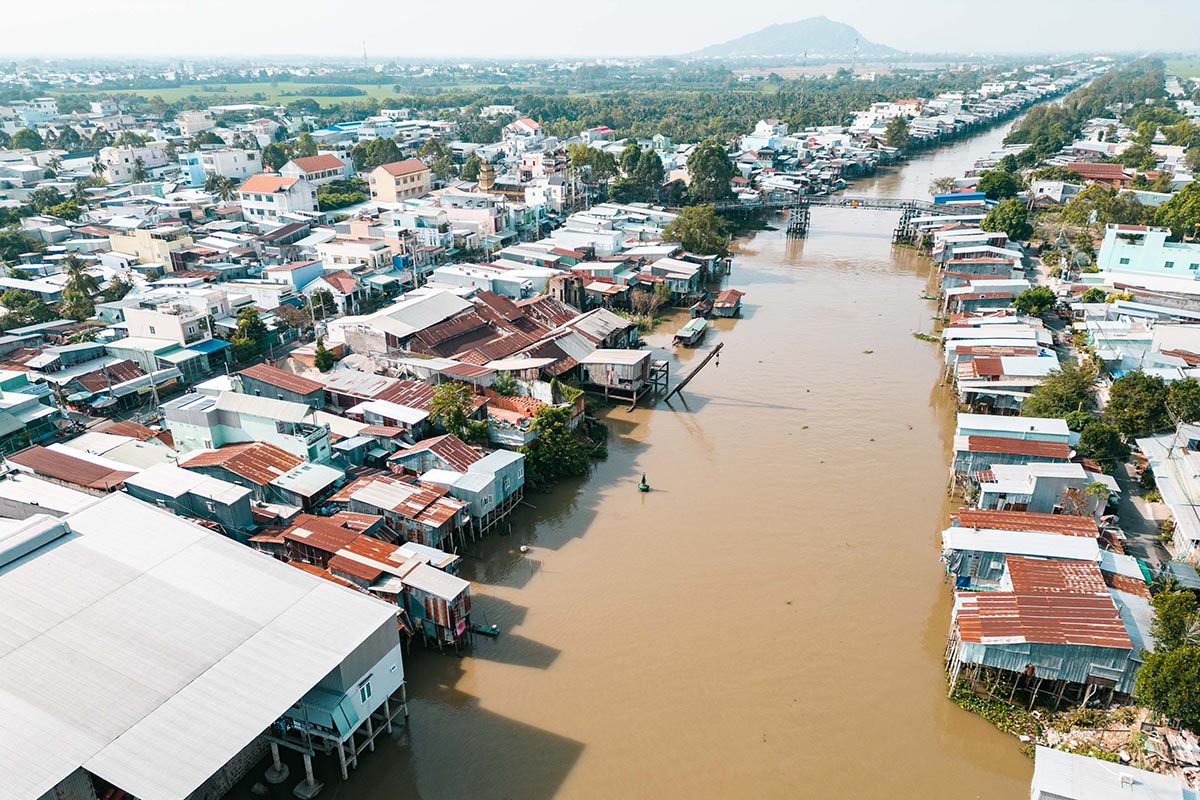
What to do in Chau Doc and around ?
——————————————————————————-
Chau Doc stands as a premier tourist destination in An Giang Province, nestled in the Mekong Delta.
Positioned close to the Cambodian border, Chau Doc is a melting pot of cultures including Vietnamese, Khmer, and Cham. This diverse influence is evident in its stunning array of historical and cultural sites, from pagodas and temples to mosques.
Located quite a distance from Ho Chi Minh City, we advise travelers who won’t have the chance to visit neighboring Cambodia to spend at least two days in Chau Doc. This allows for a deeper exploration of a distinctly multicultural Vietnam.
Table des matières de l'article
How to get to Chau Doc ?
Chau Doc is located approximately 245 km from Ho Chi Minh City and 120 km from Can Tho.
# From Ho Chi Minh City: You can purchase a bus ticket at Mien Tay bus station to travel to Chau Doc or Long Xuyen city. The journey typically takes about 5-6 hours. We recommend bus companies like Phuong Trang and Thanh Buoi. Ticket prices range from about 150,000 to 250,000 VND for a one-way trip;
# From Can Tho: Local buses are also available from Can Tho station to Chau Doc. This shorter journey takes about 3 hours, and tickets are cheaper, costing around 100,000 to 200,000 VND one-way.
# From Danang or Hanoi: You can book a flight with Vietnam Airlines or Vietjet Air from Hanoi or Danang to Tra Noc Airport (in Can Tho). Upon arriving in Can Tho, you can opt for a local bus or hire a private transfer for the nearly 3-hour drive to Chau Doc.
What to do in Chau Doc ? Our best advices
Stroll along the Vinh Te Canal
Navigating Chau Doc is straightforward. The city center is bordered to the east by the Bassac River, a distributary of the Mekong, and to the north by the Vinh Te Canal. Beyond exploring the market along the Bassac, we suggest taking a walk along the Vinh Te Canal. For instance, you could walk up to the Phan Xich Long bridge, where you’ll enjoy a panoramic view of the entire canal. Cross it and turn left onto the narrow Tay Xuyen street. This path gradually narrows, leading you into the heart of village life. The locals here are incredibly welcoming.
Tay Xuyen street along the canal. Crédit photo : Mathieu Arnaudet
Explore the floating market and the Cham village
From your hotel, you can arrange a boat trip on the river. Set out early, around 6 AM, to the fish market (“cho ca”) of Chau Doc. From there, you’ll embark on a small boat to experience life on the water.
Départ en barque du marché de Chau Doc. Crédit photo : Mathieu Arnaudet
Like other destinations in the Mekong Delta (Can Tho, Long Xuyen), the floating market has lost much of its original charm and has almost disappeared. However, you can still explore the waterside dwellings and enjoy breakfast from your boat.
Fishing in Bassac tiver, Chau Doc. Photo credit : Mathieu Arnaudet
After exploring the waterways, your boat captain will guide you to the Cham village of Chau Giang. Your entry point will be Mohamad’s workshop, known for crafting Cham textiles and clothing! Here, you’ll step into a different world—a Muslim community that is gradually opening up, yet remains quite self-contained…
The mosque of Cham village Chau Giang. Photo crédit : Mathieu Arnaudet.
This tour will be even more enriching if you are accompanied by a guide—don’t hesitate to ask our travel consultants to include this activity in your visit. Without a guide, it will be impossible to communicate with the boatman or the locals (some of whom do not even speak Vietnamese, making the guide’s job even more challenging!).
Visiting Tra Su forest
The Tra Su Bird Sanctuary or Tra Su Cajuput Forest is nestled in the Tinh Bien district of An Giang province, roughly 25 kilometers from Chau Doc city center.
This permanently flooded forest is a popular tourist destination, especially among Vietnamese travelers, and hosts a significant variety of wildlife. Spanning about 845 hectares, the area is blanketed with a green carpet of water ferns and a dense cajuput tree forest.
# How to get there? You can rent a motorcycle from your hotel and drive there. If you choose this option, make sure to set your Google Maps to “Bãi Đỗ Xe Rừng Trà Sư” for the parking area, which leads directly to the entrance. Alternatively, a taxi ride will cost around 300k each way.
# What to do there? The site offers two boat tours: a tranquil rowboat ride perfect for bird watching, and a motorboat ride, which is a bit more adventurous and takes you through the water ferns. The motorboat tour is where the most iconic photos of the site are often captured, but both experiences are worth undertaking.
Below are some photos from both tours.
Visiting Sam mountain (Nui Sam) and enjoy the sunset
Just 6 kilometers from the center of Chau Doc lies Nui Sam Mountain, a true spiritual pilgrimage site. Standing tall at 230 meters, it’s the highest mountain in the Mekong Delta!
At the base of the mountain, you’ll find numerous temples and pagodas, such as Tay An Pagoda and Ba Chua Xu Temple. Others are located at the summit, accessible by cable car. To fully enjoy the site at a leisurely pace, we recommend visiting on weekdays and avoiding public holidays according to the lunar calendar, like the first days of Tet.
Here are some of the buildings we recommend you visit:
Ba Chua Xu temple
As mentioned, at the foot of Nui Sam Mountain is Ba Chua Xu Temple, arguably the most significant pilgrimage site on the mountain. Let’s discuss it further. The temple was built in 1820 to honor the local guardian goddess, Ba Chua Xu. It features typical Chinese architectural elements with four square roofs covered in blue tiles.
It is said that the goddess is so sacred that anyone who offers her incense can have their wishes granted. As a result, during the festival held at Ba Chua Xu Temple from the 23rd to the 27th of April according to the lunar calendar, many pilgrims flock to the temple. During the ceremony, numerous rituals are conducted alongside a host of cultural and traditional activities.
Ba Chua Xu temple at Chau Doc
Hang pagoda
Another significant site on the mountain recognized as a national historical relic is Hang Pagoda, a well-known spiritual place where thousands of tourists come to make pilgrimages and light incense each year.
The pagoda was built in 1926 to commemorate Nguyen Huu Canh of the Nguyen dynasty, who reclaimed Vietnam’s territorial sovereignty. Note that the pagoda is located at the end of a 400-meter climb that you must absolutely undertake.
Stairs to go to Hang pagoda, Chau Doc.
Tay An pagoda
Designated as a “national level art and architecture relic” by the Ministry of Culture since July 10, 1980, Tay An Pagoda is also recognized by the Vietnam Record Book Center as “a pagoda with an architectural style that combines Indian art with the ancient ethnic architecture of Vietnam.”
Constructed in 1820, the pagoda has seen seven generations of administrators who have undertaken numerous renovations over the years. The current architecture of the pagoda was notably enhanced under the direction of Venerable Buu Tho in 1958. He constructed three buildings and repaired the main hall. From 1993 to the present, Abbot Thich Hue Kinh has organized the restoration and construction of many new structures to accommodate the global tourists who come to the pagoda each year on pilgrimage.
Tay An pagoda, Chau Doc. Photo credit : Mathieu Arnaudet
At the end of the day, we recommend treating yourself to a drink at the Victoria Nui Sam, a luxury hotel built on the mountainside. The view is superb, and you’ll likely enjoy a beautiful sunset. Remember to reserve your table during the weekends.
View from Victoria hotel, Nui Sam, Chau Doc. Photo credit : Mathieu Arnaudet
Unfortunately, in Vietnam, spiritual sites are quickly turning into tourist attractions, as evidenced by the gigantic Buddha statue currently under construction.
Gigantic Buddha statue construction, Nui Sam. Photo credit : Mathieu Arnaudet
Visiting the park of Cam mountain (« the forbidden mountain »)
Cam Mountain, part of the That Son range, has long been revered by many as a sacred mountain. Originally known as Gam Mountain and also called Thien Cam Son (meaning “the mountain as beautiful as silk brocade”), its origins and interpretations vary widely across different theories.
Legend has it that in ancient times, the mountain was perilous and home to wild animals. Monks seeking solitude spread rumors that the mountain was inhabited by many gods to deter visitors. It was said that anyone who set foot there without good reason would fall ill or even die, instilling great fear and earning the mountain the name Cam (“forbidden”).
Today, the narrative has transformed as the mountain has become a popular tourist destination! Now known as Lam Vien Nui Cam, it boasts a diverse forest ecosystem, unique natural landscapes, and a cool climate year-round. The harmonious blend of religious architecture and natural beauty makes it an ideal pilgrimage site.
Visiting the Cam Mountain Tourist Area, you can explore pagodas, admire religious architecture, and discover caves, among other activities.
Practical information:
# Round-trip cable car ticket for adults (includes an entry fee of 20,000 VND): 180,000 VND per person. For children (includes an entry fee of 10,000 VND): 90,000 VND per child.
# One-way cable car ticket to visit Cam Mountain: Adults (includes an entry fee of 20,000 VND): 120,000 VND per person. For children (includes an entry fee of 10,000 VND): 60,000 VND per child.
Plan for at least 3 hours to fully experience the site.
Aerial view from Lam Vien Nui Cam, Chau Doc
Visiting Ta Pa pagoda
An Giang, a province bordering Cambodia, still displays a strong and visible Khmer influence. Among the pagodas we recommend visiting is Ta Pa, located in the Tri Ton district about 45 minutes from the center of Chau Doc.
The pagoda was built on Ta Pa hill at an elevation of 45 meters above ground, surrounded by trees, creating a very cool and breezy atmosphere that allows visitors to feel relaxed and infinitely peaceful. If you’re looking for a place that is both serene and beautiful, Ta Pa Pagoda is truly an ideal destination.
The pagoda is not built on flat ground but on solid support columns several tens of meters high, which is why it is possible to see the pagoda buildings from a distance even though it is in the middle of a wild mountainous area.
The structure is dedicated to Theravada Buddhism and features typical Khmer architecture. The massive and majestic building is finely sculpted with numerous reliefs of Garuda birds, Naga snakes, No tree statues, and more.
Aerial view from Ta Pa pagoda, Chau Doc. Photo credit : Mathieu Arnaudet
We also recommend visiting the lake that bears the same name. The lake is surrounded by tall and imposing rock formations, creating a striking contrast with the clear lake water.
Lac Ta Pa, Chau Doc.
Photographing Sugar Palms
Asian palm trees are so ubiquitous and integral to the local way of life in the Bay Nui (Seven Mountains) region that they have become its unofficial symbol.
Each year, as the rainy season causes the Mekong River to overflow from September to November, the rice fields transform into vast expanses of water that shimmer in the breeze.
The Palmyra palms, reaching up to 30 meters above the floodplains, offer an unmatched illustration of the region’s natural beauty.
Visitors to the area can see fishermen casting nets over flooded rice fields and men climbing the palms to pick fruits and collect the sweet sap from the upper shoots.
Sugar palm trees in An Giang. Crédit photo : Mathieu Arnaudet
You now know everything you need to fully enjoy your stay in Chau Doc !
Sorry, the comment form is closed at this time.


